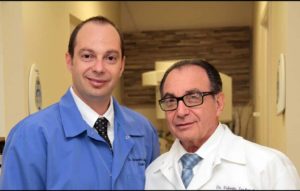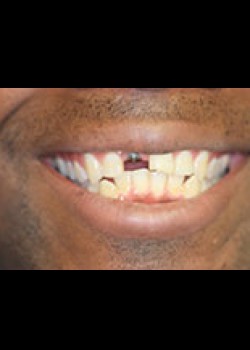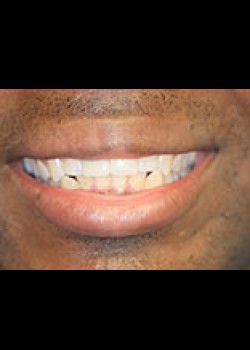Dental Extractions
What Is A Dental Extraction?
A dental extraction is when you have a tooth removed or pulled; this is one of the most requested services by people who come to our NYC dental office in pain, however this should be the last resort treatment. Once the tooth is removed you will have a space where the tooth once was and is recommended to be replaced otherwise it can affect the surrounding teeth and cause more problems.
Why Do I Need A Dental Extraction?
Usually due to pain, this pain is caused by a cavity (hole) that has penetrated your enamel and has reached the pulp chamber of the tooth which contains blood vessel and nerve tissue. An extraction is done when no other option exists: Tooth is beyond repair, broken below the gum line or the tooth fractured. At Bright Smile Design Dental we believe that if all possible saving the tooth is your best option this can be done by performing a dental root canal treatment. Post core and a dental crown when possible. If the tooth needs to be extracted a bone graft is the optimal treatment at the time of dental extraction. A bone graft help to prevent further damage to the adjacent teeth, because after a dental extraction hole is left for your body to fill in with bone. Your body usually fills in less bone then there was before and the teeth next to the site will loss bone as well unless a socket bone graft is performed.
Why Do I Need to Replace an Extracted Tooth?
After a tooth is extracted bone will try to fill in the hole where the tooth once was and usually with less bone then before, hence we recommend a bone graft in other to preserve the bone. Teeth a constantly moving into an area of less resistance (the extraction site) the opposing teeth will move in the space as well as the adjacent teeth. This movement of the teeth will cause a bad bite, tooth sensitivity, root exposure, and sore gums. A Bright Smile Design Dental we recommend the gold standard in replacing teeth which is a dental implant.
Even though most dental extractions proceed without any complications, some can occur. The most likely problems include pain, bleeding, infection, swelling, broken root tips, and bone chips and fragments. Most people who have had a tooth extracted know that a certain degree of pain and bleeding is normal. Pain that lasts for up to a week or so but is gradually improving and bleeding that continues for up to 12-24 hours but is slowing down should be considered typical and will most likely not require follow-up care.
Pain that seems to be getting worse after two days should be considered abnormal and may require evaluation by the dentist. Pain that increases after a dental extraction might be due to a dry socket, usually treated by the dentist rinsing the socket with an antiseptic mouth rinse, packing the area with a medicated dressing and putting the patient on pain medication.
Another problem is bleeding that lasts for more than twenty four hours or is increasing several hours after the extraction. This may point to a serious problem that requires prompt attention from the dentist. Prolonged bleeding may occur if there is damage to a blood vessel or other tissue during an extraction, if a patient is taking certain medications or has a predisposing medical condition. Excessive bleeding can also be caused by a patient rinsing, spitting, or smoking after a dental extraction. To stop the bleeding, a dentist can pack and stitch the socket closed.
An infection and swelling are also potential complications from a dental extraction. An infection can be caused if debris or bacteria gets into the socket. Swelling is usually due to the trauma of having the tooth extracted, or can occur from a spreading infection. Swelling can be reduced by salt water rinses (after 24 hours) and an ice compress. Infections and swelling are usually treated by the dentist with rinsing the socket, antibiotics, and in some cases draining the infection surgically.
Broken root tips, bone chips and fragments are fairly common complications following a dental extraction. A small uninfected root tip can sometimes be left inside the jaw after a dental extraction if its removal might be too difficult or cause too much trauma for the patient. Often root tips, bone chips and fragments will work their way out on their own, but may also need some help from the dentist to remove them completely. An infected root tip stuck in the jaw bone will require surgical removal. Problems with dental extractions are fairly common, but can be minimized and resolved by a dentist experienced in oral surgery.





